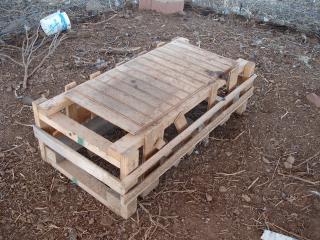- Mar 13, 2010
- 6
- 0
- 7
i have a broody cochin/silkie mix... its about the time of year i can find hatching eggs and new chicks
if i want to let her raise my chicks this year instead of having to set them up in the house i have some questions:
1. will she take to a couple of chicks if i place them under her after a couple weeks of sitting on eggs? or should i get fertile eggs?
2. to what extent is it necessary to seperate her from the rest of the flock; more info about flock below incase that sways answer.
3. if she is raising them and it stays above freezing (its been about 40 at night/50 day temp here) do i need to suppliment with a heat lamp still?
4. anything else i should know about letting a hen raise a couple chicks? (i have raised chicks the last two years myself in a brooder)
thanks!
about my flock: 2 yr mille-fleur d'uccle bantam, 2 yr silkie, 1 yr americana, 1 yr cochin/silkie (broody)
they have large house with attached 8x8 pen, but free range on non-rainy days
i do have a small pen i can seperate her into if i need to but what is acceptable bedding for a momma hen house? same as a nesting box?
if i want to let her raise my chicks this year instead of having to set them up in the house i have some questions:
1. will she take to a couple of chicks if i place them under her after a couple weeks of sitting on eggs? or should i get fertile eggs?
2. to what extent is it necessary to seperate her from the rest of the flock; more info about flock below incase that sways answer.
3. if she is raising them and it stays above freezing (its been about 40 at night/50 day temp here) do i need to suppliment with a heat lamp still?
4. anything else i should know about letting a hen raise a couple chicks? (i have raised chicks the last two years myself in a brooder)
thanks!
about my flock: 2 yr mille-fleur d'uccle bantam, 2 yr silkie, 1 yr americana, 1 yr cochin/silkie (broody)
they have large house with attached 8x8 pen, but free range on non-rainy days
i do have a small pen i can seperate her into if i need to but what is acceptable bedding for a momma hen house? same as a nesting box?




